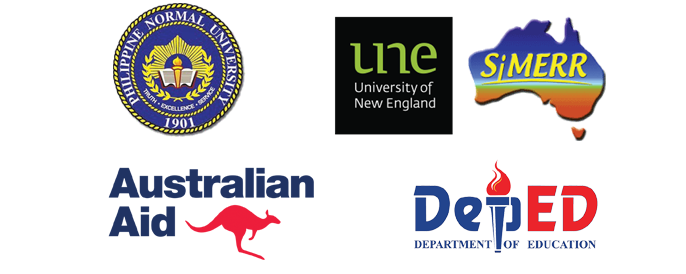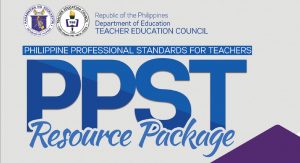PPST Support Materials
Download the support materials that guide teachers on the 24 PPST indicators by clicking on the links below
- Indicator 1.1.2 Apply knowledge of content within and across curriculum teaching areas
- Indicator 1.4.2 Use a range of teaching strategies that enhance learner achievement in literacy and numeracy skills
- Indicator 1.5.2 Apply a range of teaching strategies to develop critical and creative thinking, as well as higher-order thinking skills
- Indicator 2.3.2 Manage classroom structure to engage learners, individually or in groups, in meaningful exploration, discovery and hands-on activities within a range of physical learning environments
- Indicator 2.6.2 Manage learner behavior constructively by applying positive and non-violent discipline to ensure learning- focused environments
- Indicator 3.1.2 Use differentiated, developmentally appropriate learning experiences to address learners’ gender, needs, strengths, interests and experiences
- Indicator 4.1.2 Plan, manage and implement developmentally sequenced teaching and learning process to meet curriculum requirements and varied teaching contexts
- Indicator 4.4.2 Participate in collegial discussions that use teacher and learner feedback to enrich teaching practice
- Indicator 4.5.2 Select, develop, organize and use appropriate teaching and learning resources, including ICT, to address learning goals
- Indicator 5.1.2 Design, select, organize and use diagnostic, formative and summative assessment strategies consistent with curriculum requirements
- Indicator 5.2.2 Monitor and evaluate learner progress and achievement using learner attainment data
- Indicator 5.4.2 Communicate promptly and clearly the learners’ needs, progress and achievement to key stakeholders, including parents/guardians
- Indicator 1.3.2 Ensure the positive use of ICT to facilitate the teaching and learning process
- Indicator 1.6.2 Display proficient use of Mother Tongue, Filipino and English to facilitate teaching and learning
- Indicator 2.1.2 Establish safe and secure learning environments to enhance learning through the consistent implementation of policies, guidelines and procedures
- Indicator 2.4.2 Maintain supportive learning environments that nurture and inspire learners to participate, cooperate and collaborate in continued learning
- Indicator 3.2.2 Establish a learner- centered culture by using teaching strategies that respond to their linguistic, cultural, socio-economic and religious backgrounds
- Indicator 4.2.2 Set achievable and appropriate learning outcomes that are aligned with learning competencies
- Indicator 4.3.2 Adapt and implement learning programs that ensure relevance and responsiveness to the needs of all learners
- Indicator 5.3.2 Use strategies for providing timely, accurate and constructive feedback to improve learner performance
- Indicator 5.5.2 Utilize assessment data to inform the modification of teaching and learning practices and programs
- Indicator 6.2.2 Build relationships with parents/guardians and the wider school community to facilitate involvement in the educative process
- Indicator 7.3.2 Participate in professional networks to share knowledge and enhance practice
- Indicator 7.4.2 Develop a personal professional improvement plan based on reflection of one’s practice and ongoing professional learning


